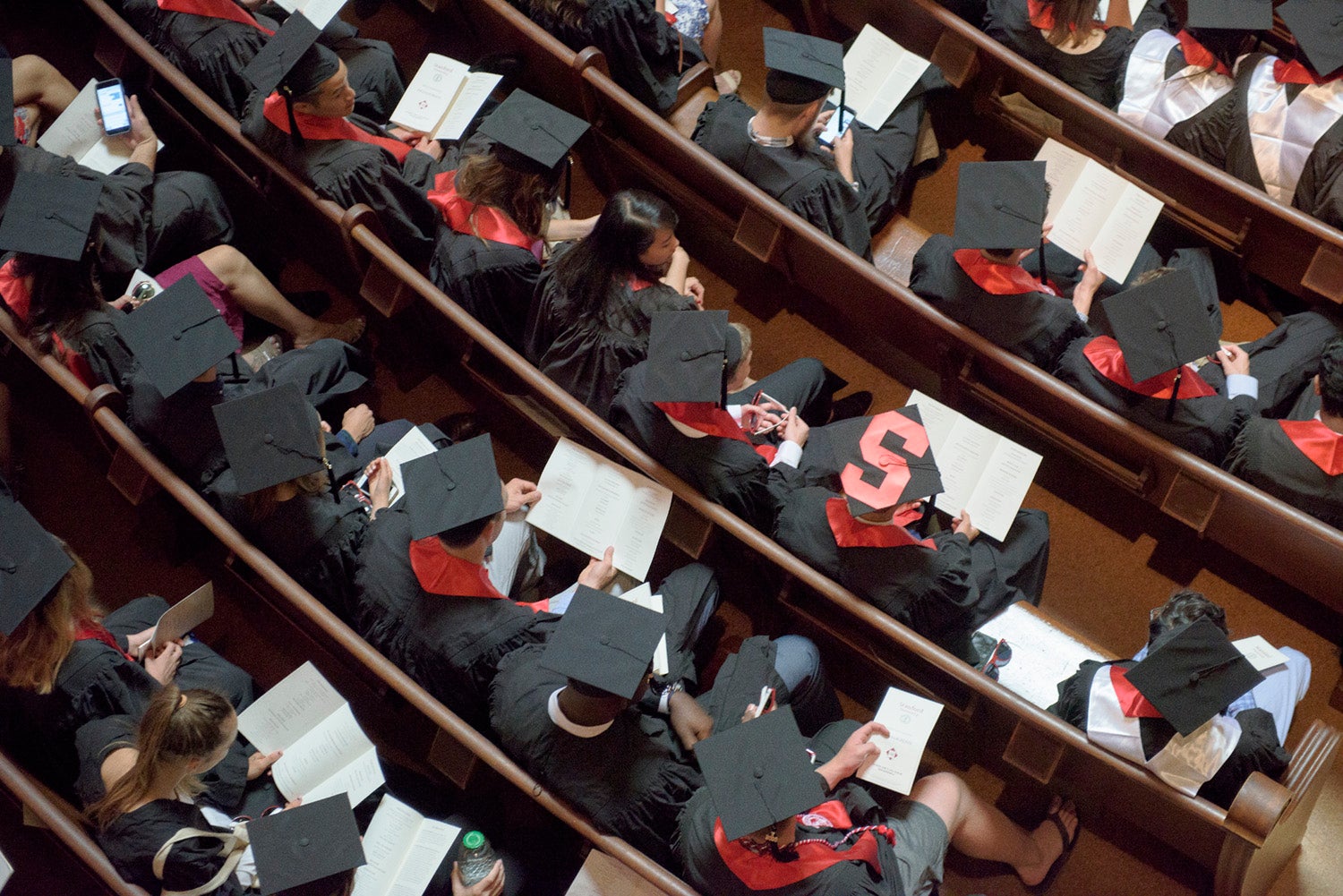Stanford University reported $1.1 billion in gifts during the fiscal year that ended August 31, 2018, reflecting the philanthropic support of 72,000 alumni, parents and friends. The fundraising total comprises gifts and pledge payments received from September 1, 2017, through August 31, 2018, including funds raised for Stanford’s adult and children’s hospitals; it does not include pledges of future support or government grants.

With donor support, 81 percent of undergraduate students graduated with zero student-loan debt in June 2018. (Image credit: L.A. Cicero)
Philanthropy helps underwrite every aspect of the university’s mission of teaching, research, service and patient care. For example, in 2017–18 donors made gifts to provide support for Knight-Hennessy Scholars, a global leadership program that welcomed its first cohort of graduate students in the fall; the renovations of Frost Amphitheater, an 8,000-seat concert and event venue in Stanford’s arts district; and the Hasso Plattner Institute of Design at Stanford, known informally as the d.school, as it enters its second decade of innovation.
Other gifts provided student financial aid. With donor support, 81 percent of undergraduate students graduated with zero student loan debt in June 2018; of the remaining students who did take out loans, the median amount of debt was $14,344. Financial aid also helped 79 percent of graduate students, in fields ranging from the humanities to social sciences to engineering.
“Stanford’s alumni, parents and friends are fundamental to the university’s success, and I am deeply grateful for their generosity,” said President Marc Tessier-Lavigne. “The engagement of the entire Stanford community remains vital as we seek ways to magnify the university’s benefit to society and move forward with a shared vision for the future.”
Funds were raised for key priorities across the university:
- $89.3 million for graduate student fellowships and undergraduate financial aid
- $71.4 million to attract and support faculty
- $436.6 million for research and programs
- $104.6 million for buildings and facilities
- $99.3 million for Stanford Health Care and Stanford Children’s Health, which includes Lucile Packard Children’s Hospital Stanford and the new Stanford Hospital, opening this fall.
The majority of donors contributed to the university through annual funds, which raised $73.1 million. Annual gifts may be used in the year they are received to meet areas of greatest need. For example, The Stanford Fund for Undergraduate Education raised $27 million toward financial aid, academic programs and student-led organizations.
Gifts from corporations accounted for more than $107 million, including a gift to establish the Stanford VMware Women’s Leadership Innovation Lab, a research and collaboration initiative that seeks to advance women’s leadership and permanently close the gender divide in the workplace.
Most gifts made to the university were under $1,000, with nearly half of individuals making gifts of $100 or less.
Gifts added $232 million to the university’s endowment, which is invested to support the university’s work in perpetuity. The endowment payout covered 22 percent of the university’s operating expenses last year.
Gifts were raised by Stanford’s Office of Development and the Lucile Packard Foundation for Children’s Health.
Media Contacts
E.J. Miranda, University Communications: (650) 724-9161, ejmirand@stanford.edu